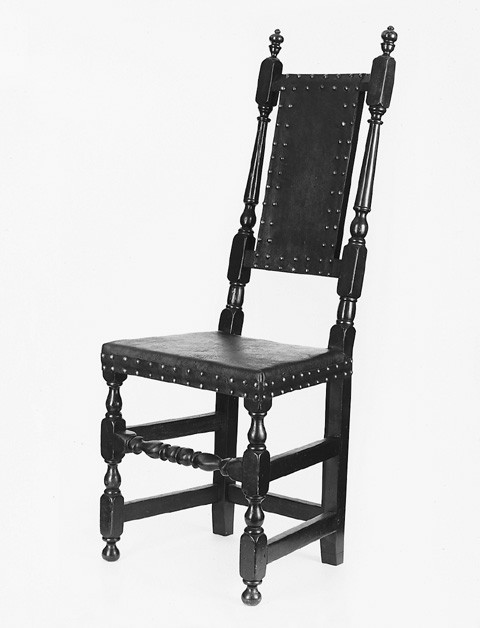
Side chair, Boston, 1710–1720. Maple and oak. H. 47 1/2", W. 18", D. 14 1/2". (Private collection; photo, Gavin Ashworth.)
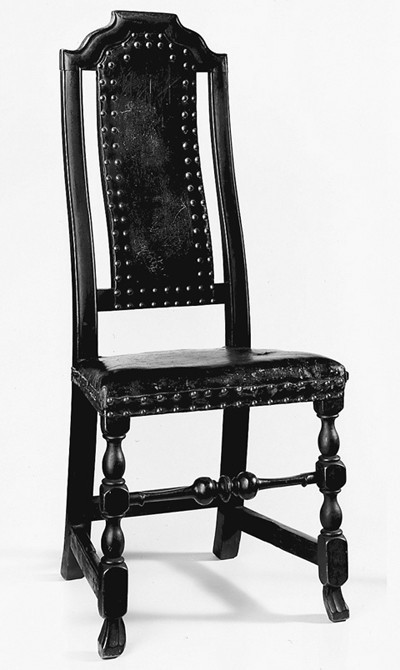
Side chair, Boston, ca. 1725. Maple and oak; original leather upholstery. H. 43 3/4", W. 18 1/2", D. 15". (Private collection; photo, Gavin Ashworth.)

Side chair, Boston, 1710–1720. Maple. H. 45 1/4", W. 17 1/2", D. 14 3/4". (Private collection; photo, Gavin Ashworth.)
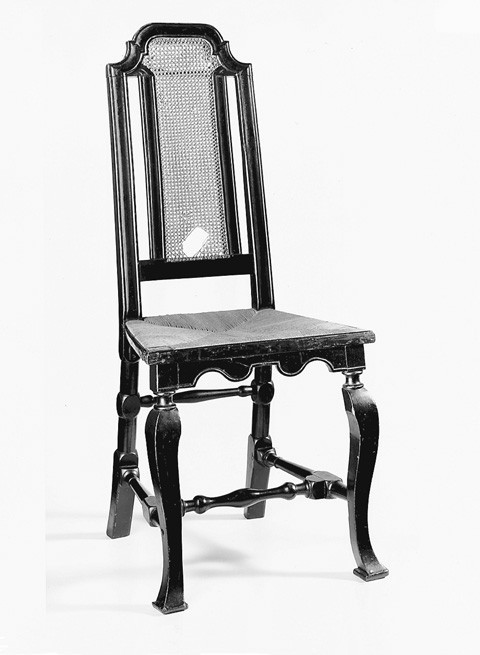
Side chair, Boston, ca. 1725. Maple. H. 43", W. 19", D. 15". (Private collection; photo, Gavin Ashworth.)
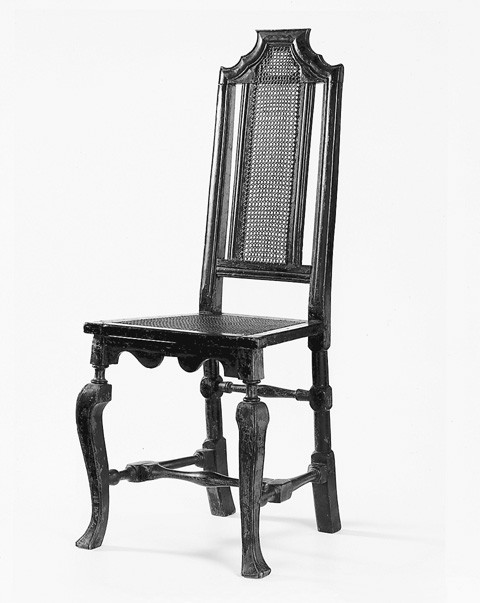
Side chair, Britain, ca. 1725. Beech. H. 44 1/2", W. 17 3/4", D. 15 1/8". (Private collection; photo, Gavin Ashworth.)

Side chair, Boston, ca. 1725. Maple. H. 45", W. 19", D. 15 1/2". (Courtesy, Winterthur Museum.)
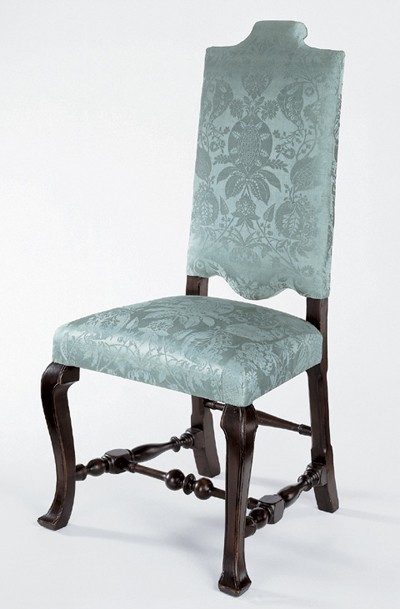
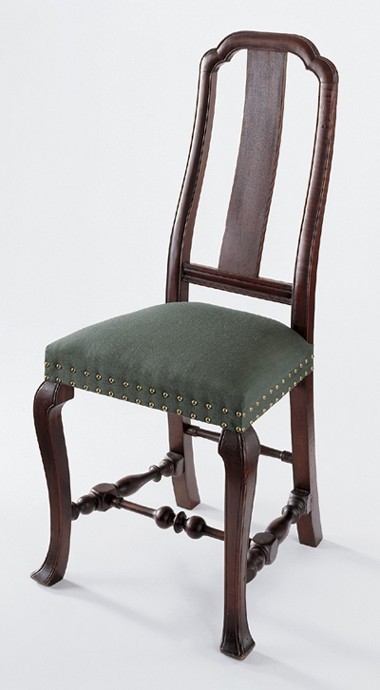
Side chair, Boston, ca. 1725. Maple. H. 43 3/16", W. 18 1/4", D. 14 3/4". (Private collection; photo, Gavin Ashworth.)
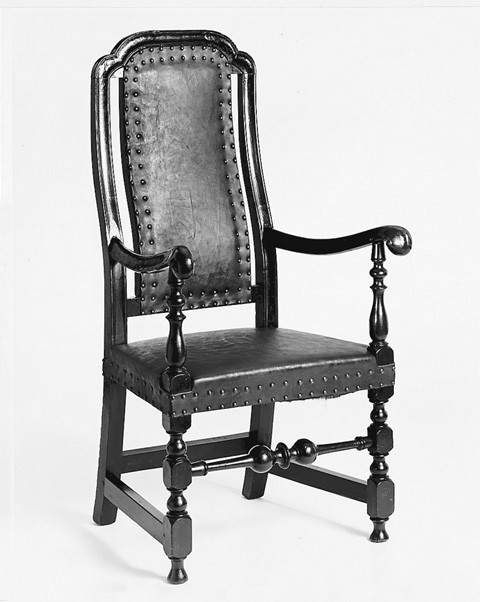
Armchair, Boston, 1715–1725. Maple. H. 46", W. 23", D. 16 1/2". (Courtesy, Winterthur Museum.)
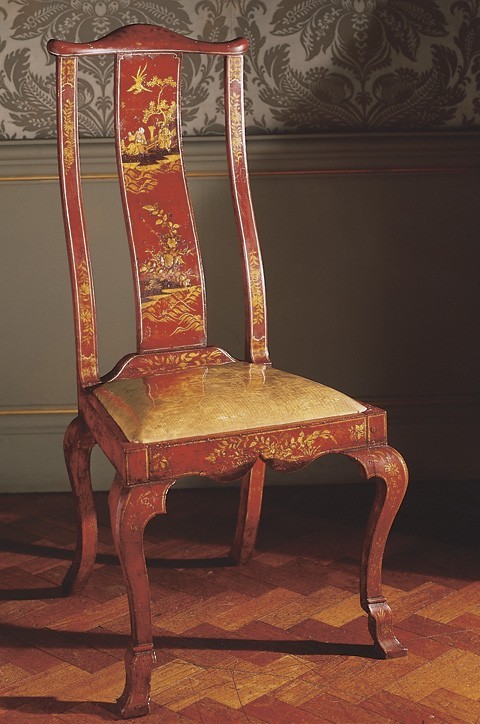
Side chair, London, 1715–1725. Beech; japanned green and gold on a red ground. H. 45 1/2", W. 21 1/2". (Courtesy, Victoria and Albert Museum.)
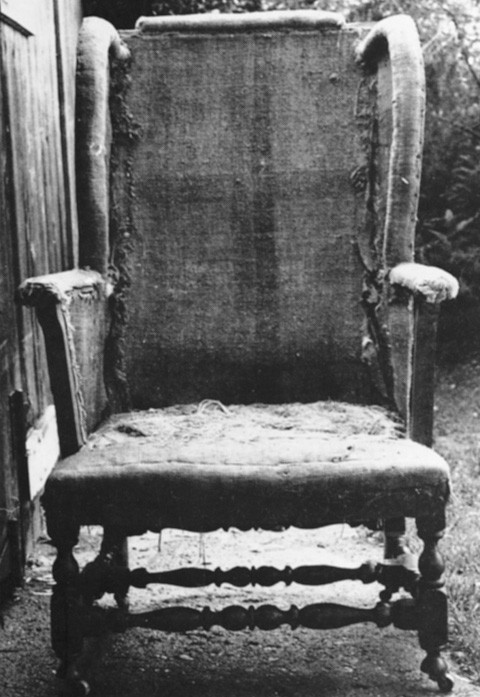
Easy chair, Boston, 1690–1710. Maple with pine; original foundation upholstery. H. 42". (Photo, Winterthur Museum.)
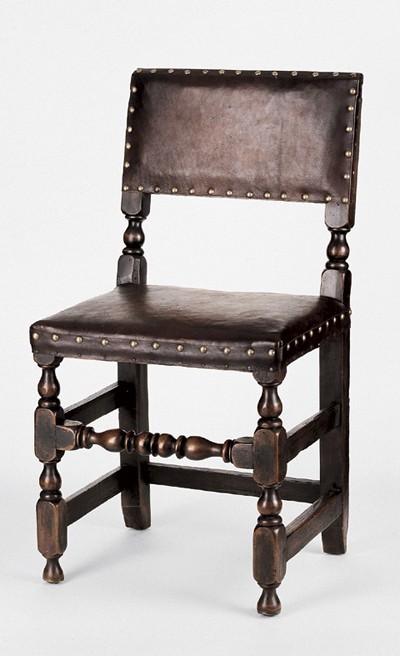
Side chair, Boston, 1690–1700. Maple and oak. H. 35 1/2", W. 18 1/2", D. 18 1/2". (Private collection; photo, Gavin Ashworth.)
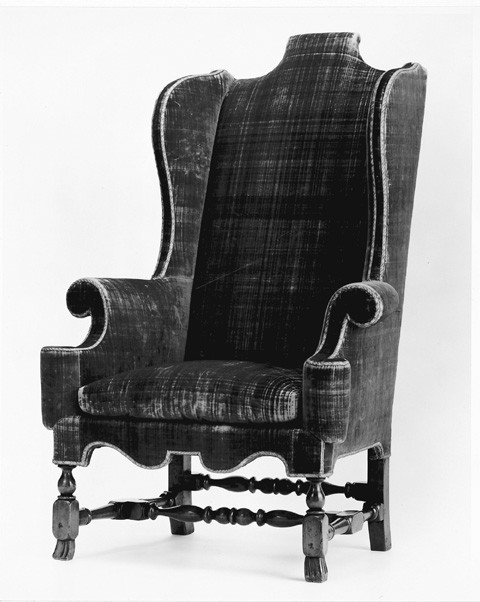
Easy chair, Boston, 1700–1710. Maple with oak. H. 50 3/4", W. 27", D. 21". (Courtesy, Winterthur Museum). The feet are worn and have lost their laminated facings.
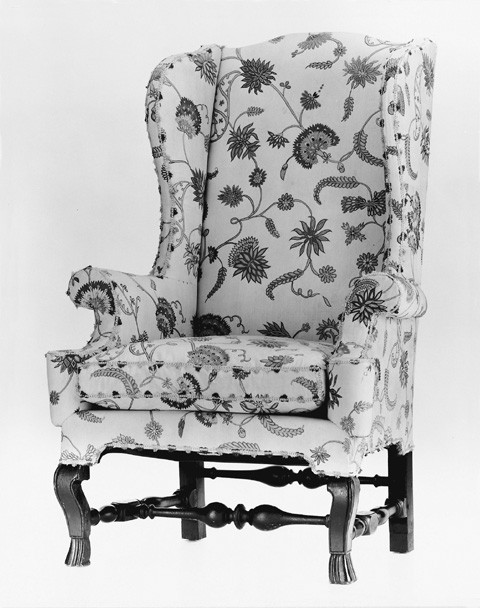
Easy chair, Boston, ca. 1725. Maple. H. 48 1/2", W. 27 3/8", D. 21". (Courtesy, Winterthur Museum.)
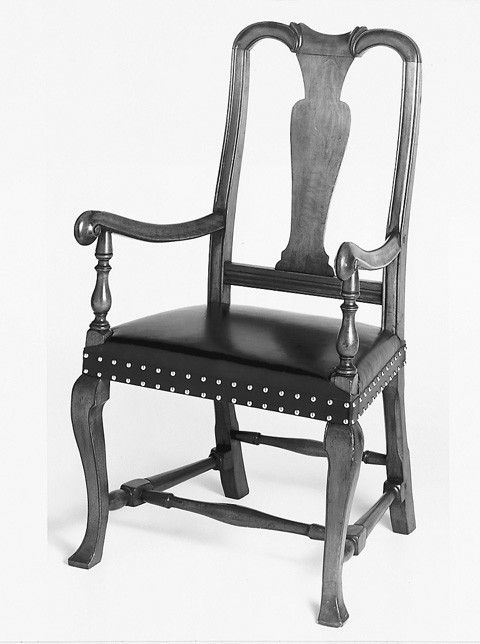
Armchair, Boston, 1725–1730. Birch and cherry. H. 40 3/4", W. 22 7/8", D. 17 1/8". (Courtesy, Winterthur Museum; bequest of Dr. and Mrs. Newberry Reynolds.)
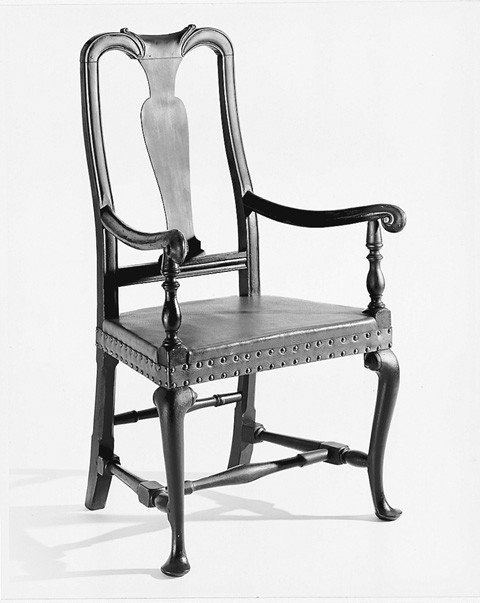
Armchair, Boston, 1725–1735. Maple. H. 43 1/4", W. 20 11/16", D. 17". (Courtesy, Winterthur Museum.)
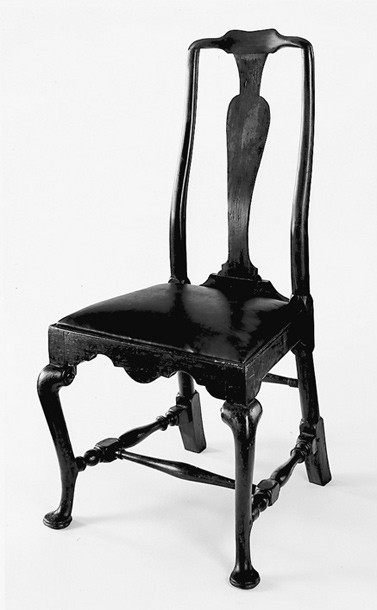
Side chair, Boston, ca. 1730. Walnut. H. 41", W. 19 3/16", D. 15 3/4". (Private collection; photo, Gavin Ashworth.) The crest rail may be a replacement.

Elbow chair, Boston, 1725–1735. Mahogany with maple. H. 34 3/4", W. 23", D. 19". (Courtesy, Winterthur Museum.)
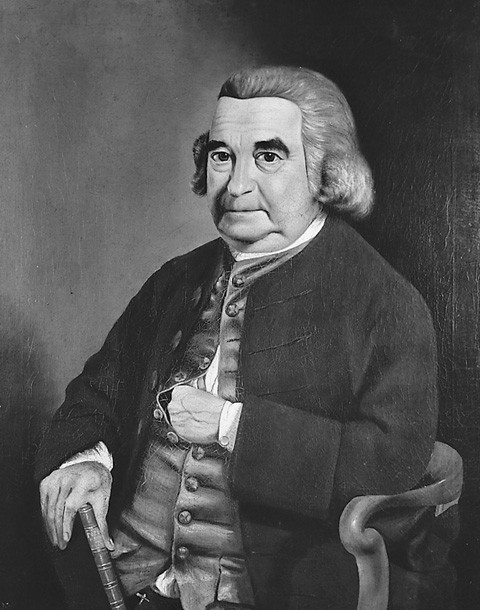
Abraham Redwood, II, attributed to Samuel King, Newport, 1773–1780. Oil on canvas. 42 1/2" x 33 1/2". (Collection of the Redwood Library and Atheneum, Newport.)

Armchair, Boston, ca. 1725–1730. Walnut with maple. H. 43 1/2", W. 23", D. 18 3/8". (Courtesy, Winterthur Museum.) The center stretcher is replaced.
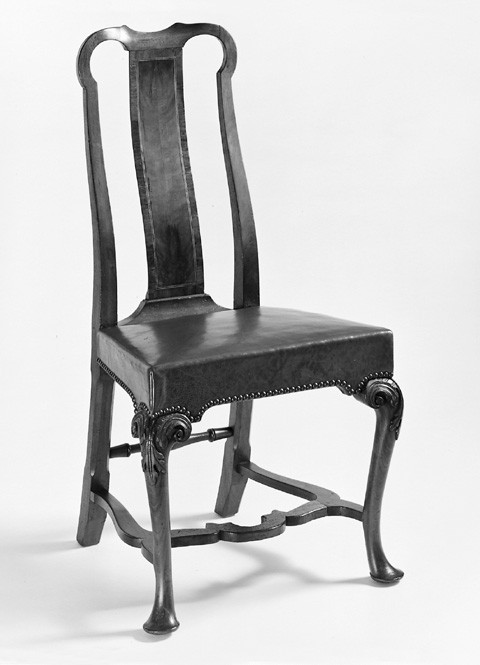
Side chair, Boston, ca. 1725–1730. Walnut with maple. H. 40 1/4", W. 20", D. 16". (Courtesy, Winterthur Museum.)
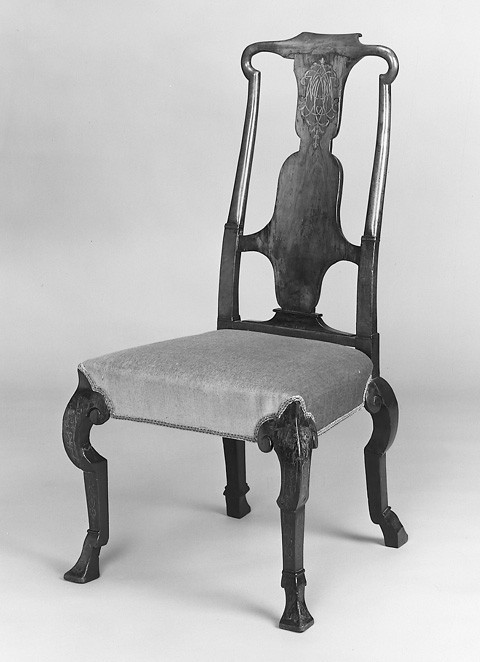
Side chair, London, ca. 1720. Walnut with lightwood inlay. Dimensions not recorded. Illustrated in Nicholas Grindley, The Bended-Back Chair (London: Barling, 1990), no. 17.
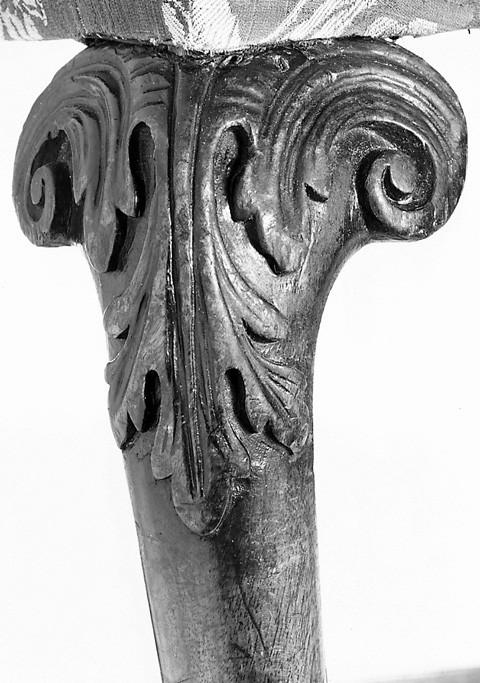
Detail of the knee carving on the armchair illustrated in fig. 20.
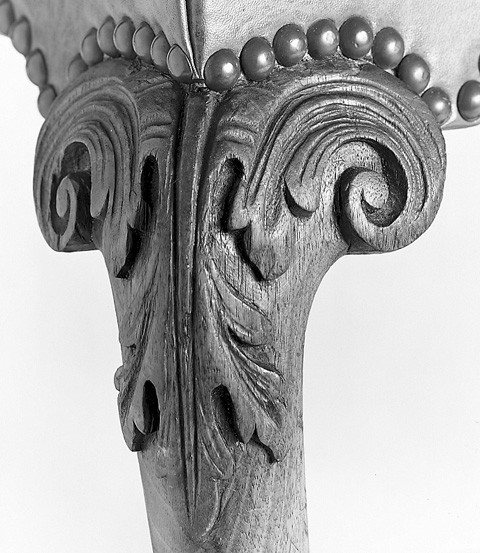
Detail of the knee carving on the side chair illustrated in fig. 21.
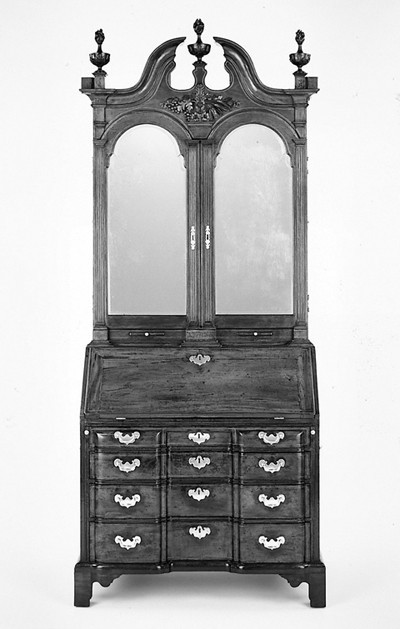
Desk-and-bookcase, Boston, ca. 1740–1750, Unknown artist. Mahogany, oak secondary wood. H. 94", W. 41 1/4", D. 24". (Courtesy, Art Institute of Chicago, major acquisitions Centennial Fund.) The feet and one finial are replaced.
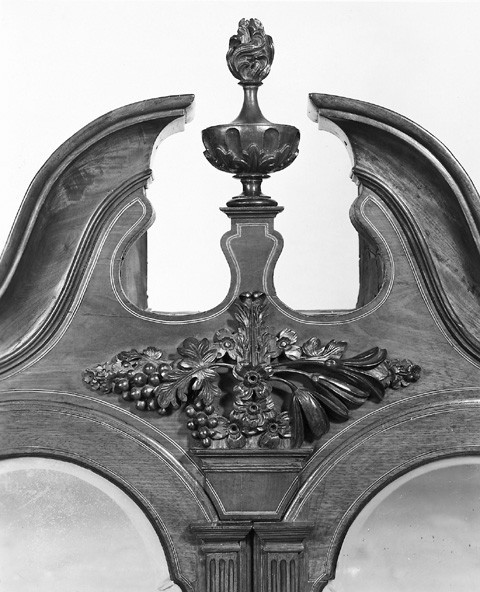
Detail of the carved appliqué on the desk-and-bookcase illustrated in fig. 25.
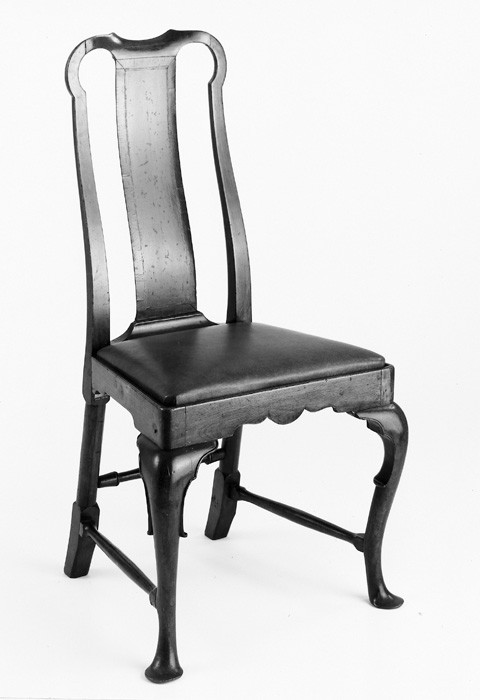
Side chair, Boston, ca. 1725–1730. Mahogany with maple. H. 41", W. 21 1/4". (Collection at Hunter House, Preservation Society of Newport County; photo, John W. Corbett.)

Easy chair, Boston, ca. 1730. Maple. H. 48", W. 33 3/4", D. 29". (Courtesy, Museum of Fine Arts, Houston, Bayou Bend Collection; gift of Miss Ima Hogg.)

Side chair, Boston, ca. 1730. Mahogany; beech slipseat frame. H. 44", W. 19", D. 21". (Courtesy, Museum of Fine Arts, Houston, Bayou Bend Collection; gift of Miss Ima Hogg.)
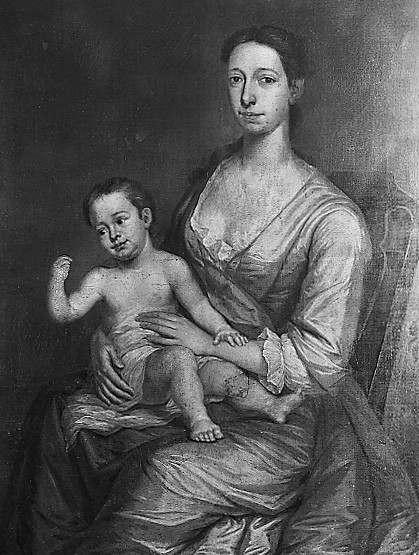
John Smibert, Mary Fitch Oliver and Andrew Oliver, Jr., Boston, 1732. Oil on canvas. 50 1/2" x 40 1/2". (Private collection; photo, Frick Art Reference Library.)
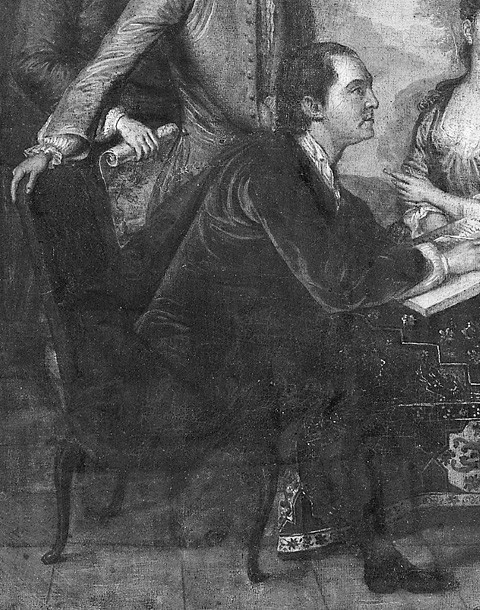
John Smibert, detail of a study for The Bermuda Group, ca. 1729. Oil on canvas. 69 1/2" x 93". (Courtesy, National Gallery of Ireland.)
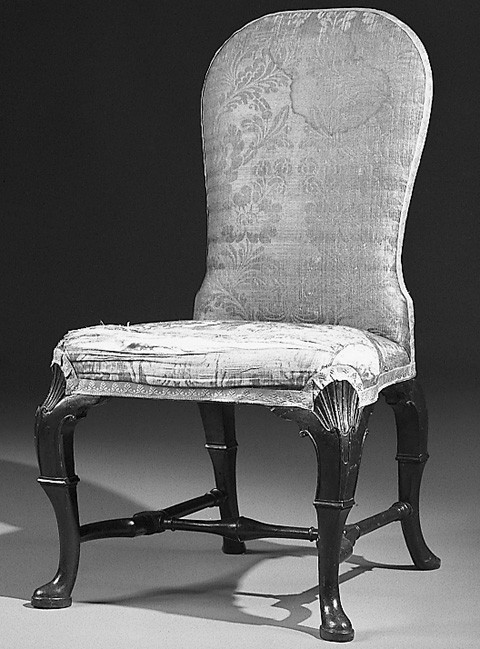
Backstool from the shop of Thomas Roberts, London, 1728. Walnut. H. 41", W. 23 1/2", D. 25". (Courtesy, Christie’s.)

Backstool, Boston, ca. 1730. Walnut with maple and beech. H. 40", W. 21", D. 25". (Chipstone Foundation; photo, Gavin Ashworth.) The backstool originally had silk upholstery.
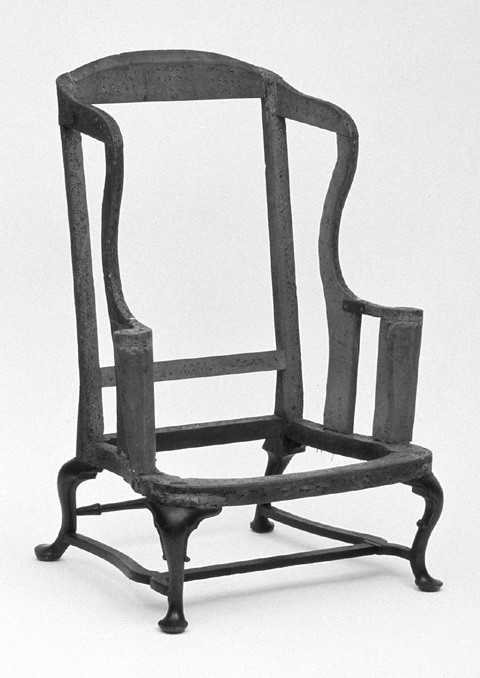
Easy chair, Boston, 1730–1740. Walnut with maple. H. 49". (Courtesy G. W. Samaha Antiques, Milan, Ohio; photo Jeffery Dykes.)
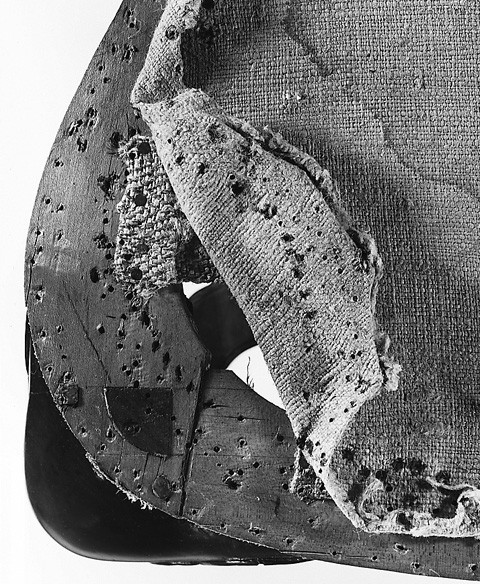
Detail of the seat rail and front leg joint of the backstool shown in fig. 33. (Photo, Gavin Ashworth.)
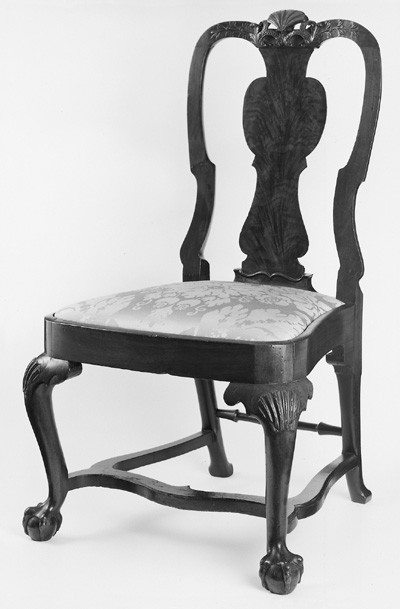
Side chair, Boston, ca. 1735. Walnut and walnut veneer with maple and white pine. H. 38 5/8", W. 20 3/4", D. 18 1/2". (Courtesy, The Metropolitan Museum of Art, gift of Mr. and Mrs. Benjamin Ginsburg, 1984 (1984.21) photo, Gavin Ashworth.)
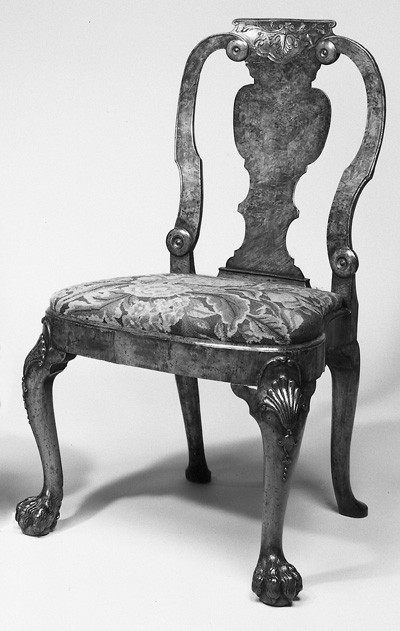
Side chair, London, 1725–1735. Walnut and walnut veneer. (Courtesy, Sotheby’s.)
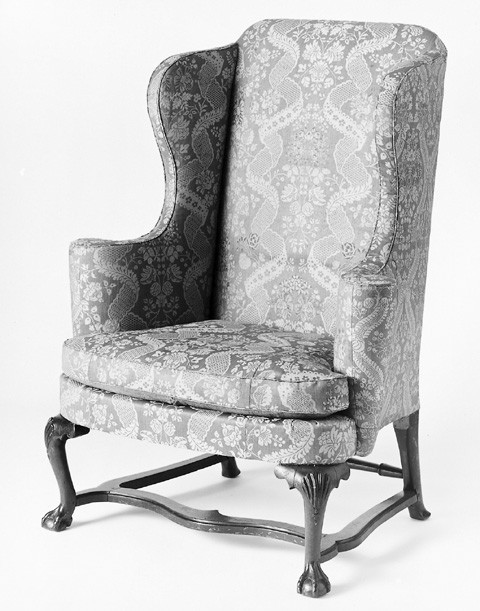
Easy chair, Boston, ca. 1735–1740. Walnut and maple. H. 44", W. 31", D. 22". (Courtesy, Winterthur Museum.)
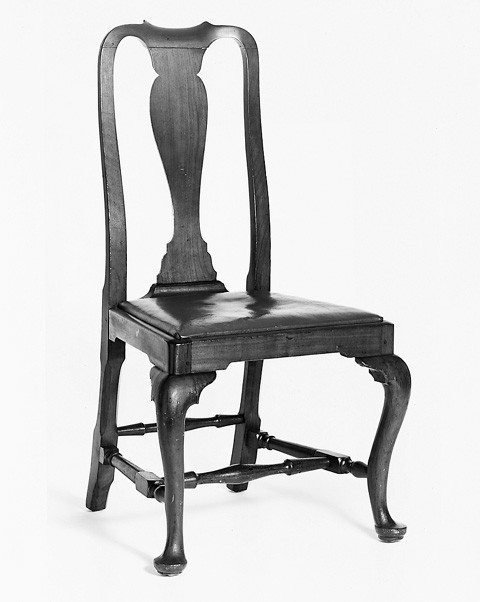
Side chair, Boston, 1735–1755. Walnut. H. 38 7/8", W. 19 3/4", D. 16 1/4". (Courtesy, Winterthur Museum.)
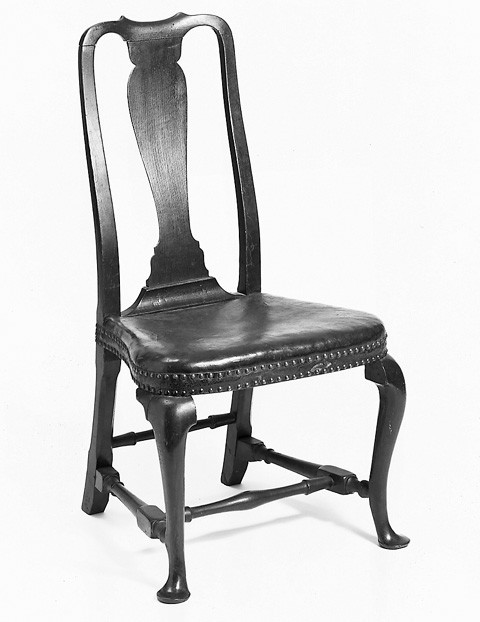
Side chair, Boston, 1735–1755. Walnut with maple. H. 39 5/8", W. 21 3/4", D. 21 1/4". (Courtesy, Winterthur Museum; gift of Mr. & Mrs. George M. Kaufman, Martin E. Wunsch, and anonymous donor.)
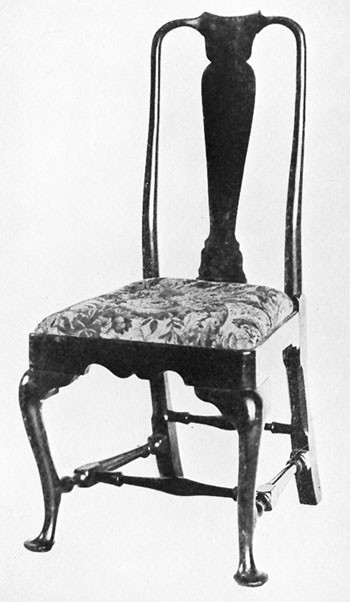
Side chair, Boston, 1730–1740. Walnut. H. 41 3/4", W. 20 1/2", D. 20". Illustrated in Anderson Galleries, Colonial Furniture, the Superb Collection of Mr. Francis Hill Bigelow of Cambridge, Massachusetts, New York, January 17, 1924, lot. 142.
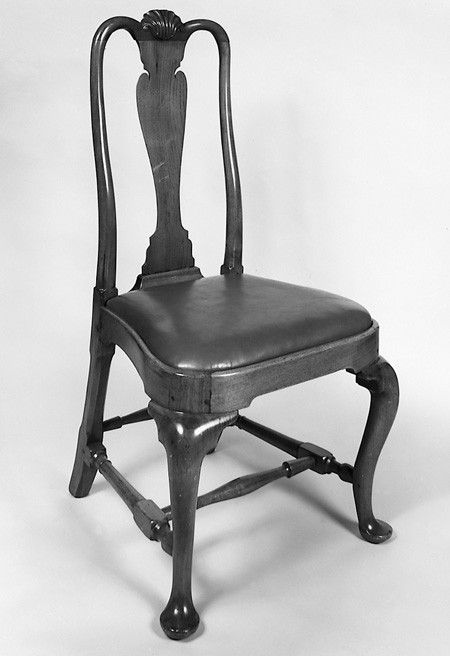
Side chair, Boston, 1740–1750. Walnut; maple slip seat. H. 40 1/2", W. 21 3/4". (Courtesy, Moses Brown School.)
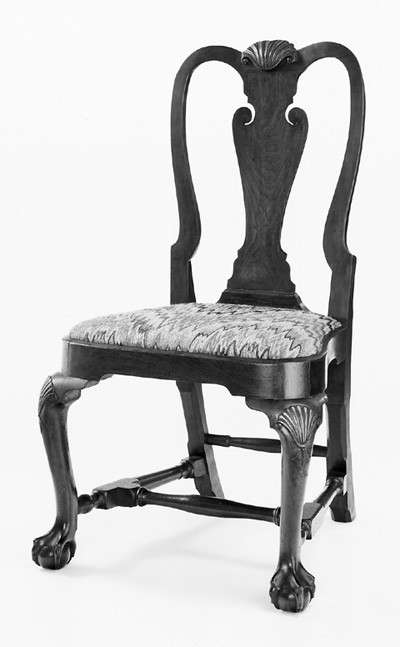
Side chair, Boston, 1740–1755. Mahogany; maple slip seat. H. 38 1/2", W. 22", D. 21 1/4". (Chipstone Foundation; photo, Gavin Ashworth.)
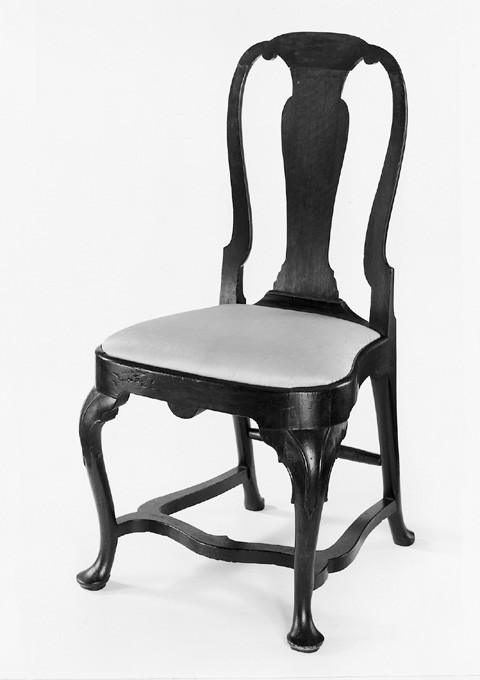
Side chair, Boston, 1735–1750. Walnut. H. 40 3/4", W. 20 5/8", D. 17 3/4". (Private collection; photo, Gavin Ashworth.)
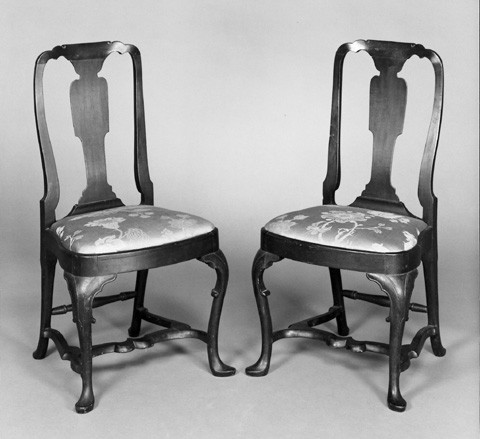
Side chair, Boston, 1735–1745. Walnut. H. 40 3/4". (Courtesy, Wayne Pratt Antiques.)
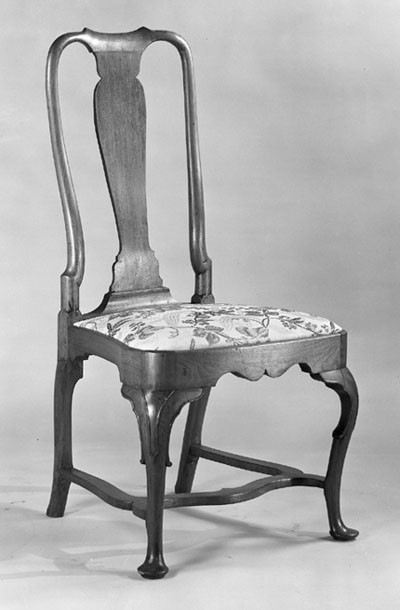
Side chair, Boston, 1735–1745. Walnut; maple slipseat frame. H. 40 7/8", W. 21 1/16", D. 17 1/8". (Courtesy, Museum of Fine Arts, Boston; gift of Miss Dorothy Buhler.)
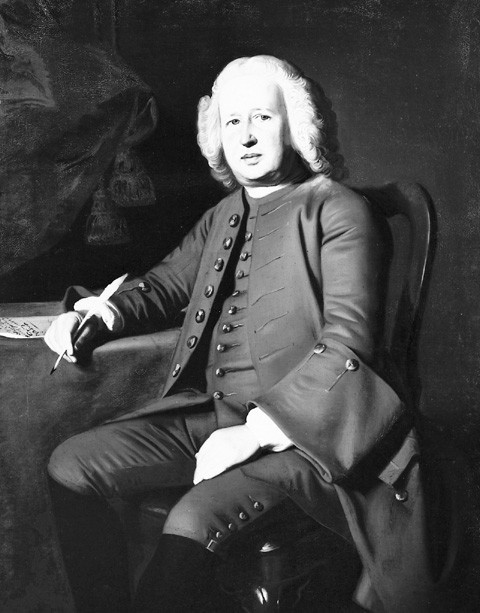
John Singleton Copley, John Barrett, 1758. Oil on canvas. 50" x 40". (Courtesy, The Nelson-Atkins Museum of Art, Kansas City, Missouri; gift of the Enid and Crosby Kemper Foundation F76-52; photo, Jamison Miller)
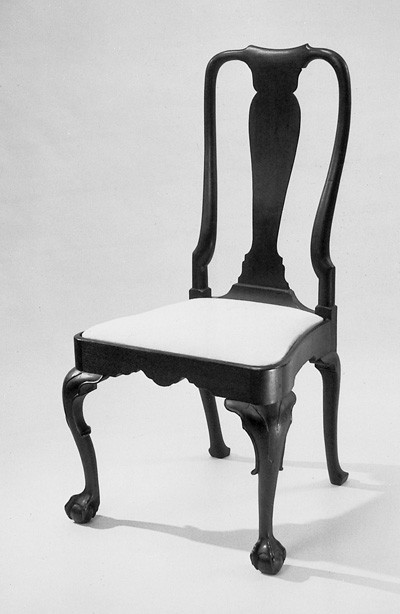
Side chair, Boston, 1740–1750. Walnut. H. 40 1/4", W. 20 3/4", D. 24". (Private collection; photo, Gavin Ashworth.)

Easy chair by Clement Vincent or George Bright with upholstery by Samuel Grant, Boston, 1759. Walnut and maple with maple and white pine. H. 46 1/8", W. 33 7/8", D. 21 3/4". (Courtesy, Historic New England/SPNEA; photo, Richard Cheek.) The front feet are replaced.
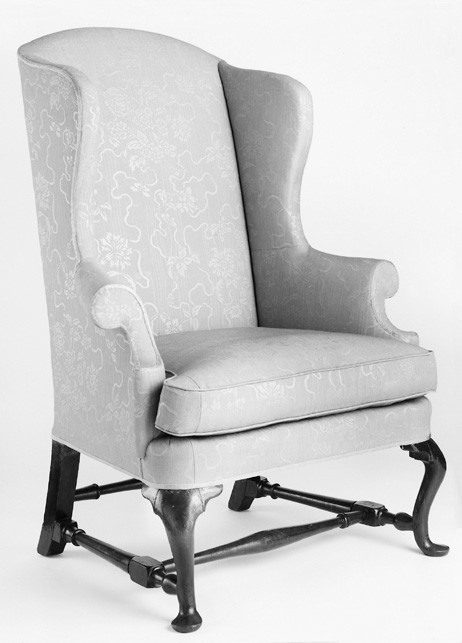
Easy chair, Boston, 1735–1755. Walnut with maple. H. 48", W. 32". (Courtesy, Leigh Keno American Antiques.)

Easy chair, Boston, ca. 1758. Walnut and maple with maple. H. 46 3/8", W. 32 3/8", D. 25 7/8". (Courtesy, The Metropolitan Museum of Art, Gift of Mrs. J. Insley Blair 1950 (50.228.3) Photograph ©The Metropolitan Museum of Art.)

Side chair, Boston, 1735–1745. Walnut. Dimensions unrecorded. Illustrated in Anderson Art Galleries, Philip Flayderman Collection, January 4, 1930, lot 492.
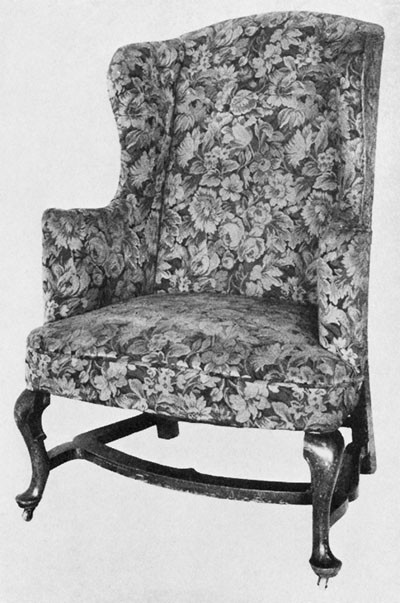
Easy chair, Boston, 1735–1745. Walnut. Dimensions unrecorded. Illustrated in Anderson Art Galleries, Philip Flayderman Collection, January 4, 1930, lot 493.
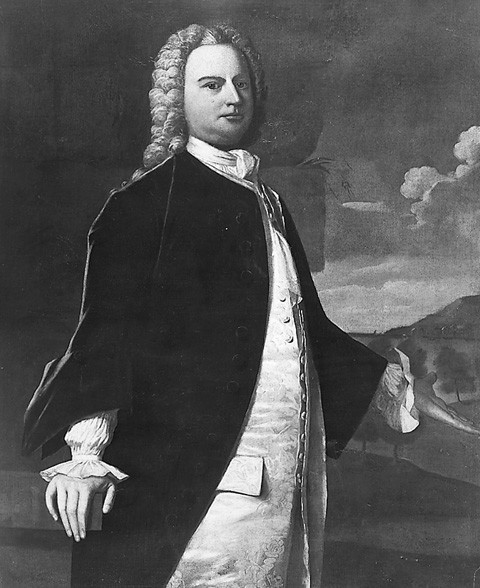
Robert Feke (1706/1707–1752), John Banister, 1748. Oil on canvas. 50 9/16" x 40 9/16". (Courtesy, Toledo Museum of Art.)
